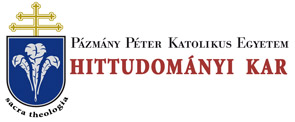Folia Theologica et Canonica, Supplementum (2016)
Hanns Engelhardt, Marriage and Divorce In Anglican Canon Law
MARRIAGE AND DIVORCE IN ANGLICAN CANON LAW 57 appended, and declared them void from the beginning and the parties to be separated “by course of law”. Can. 100 forbade persons under the age of 21 to contract themselves to marry without their parents’ consent. Cans. 101 through 104 concerned licences or faculties for weddings without banns. The Marriage Act 1753, full title “An Act for the Better Preventing of Clandestine Marriage”,3" popularly known as Lord Hardwicke’s Marriage Act, was the first statutory legislation in England and Wales to require a formal ceremony of marriage for its validity. The Act “made a marriage in facie ecclesiae the only form of marriage which the state would support and recognize, and so enlarged upon and enforced the provisions made by canon law for regulating marriage and for its registration. Any marriage performed contrary to even one specification laid down by the Act was to be held as null and void. Those clergy who offended against the Act were to be sentenced to a term of 14 years’ transportation, and if they offended against the provisions made for registration, the sentence was to be one of death.”31 Eventually, an Act of 183 632 introduced a secular form of initiating a marriage before a registrar.33 It was supplemented by another act of the same year14 which created a registry of births, deaths and marriages. By these acts marriage was finally taken out of the hands of the Church, and a secular law and administration of marriages was initiated. 2. Episcopal Church The General Convention of the Episcopal Church considered the subject of marriage several times in the course of the 19lh century, but only with regard to marriages of divorced persons, with which question we will deal later.35 Only in 1904 a Canon 38 was enacted which enjoined ministers to observe the law of their state concerning marriage (Sec. 1), to solemnize a marriage only in the presence of two witnesses (Sec. 2 (i)), and to register the wedding (Sec. 2 (ii)).36 This regulation was enlarged in 1931. Ministers were expressly enjoined to ascertain by due inquiry the right of the parties according to the laws of the " 26 Geo. II, c. 33. 31 Brown, R. L„ The Rise and Fall of the Fleet Marriages, 135 seq. The death penalty however was not part of Hardwicke’s original bill but introduced by way of an amendment: Brown, R. L., The Rise and Fall of the Fleet Marriages, 136, n. 66. 33 6&7 William IV, c. 85. 33 Holdsworth, W., A History of English Law, XV. London 1965. 208. 34 6&7 William IV, c. 86; cf. Holdsworth, W„ A History of English Law, XV. 208, n. 8. 35 Cf. CandC p. 398 seqq. 36 Cf. White, E. A. - Dykman, J. A., Annotated Constitution and Canons for the Government of the Protestant Episcopal Church in the United States of America otherwise known as The Episcopal Church, New York 1981 (Edition Revised and Updated by the Standing Commission on Constitution and Canons of the General Convention, 1985) 403 seq.
